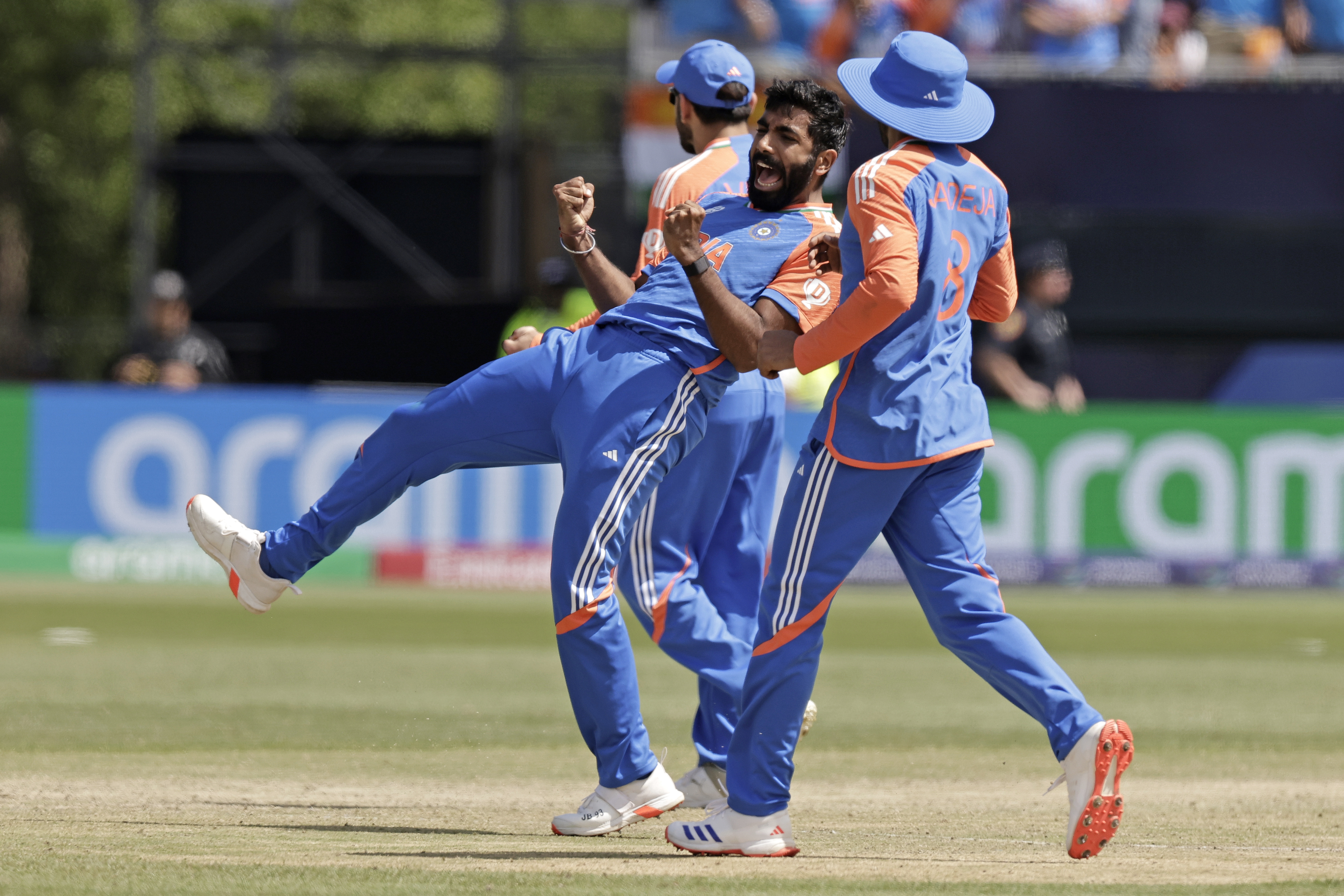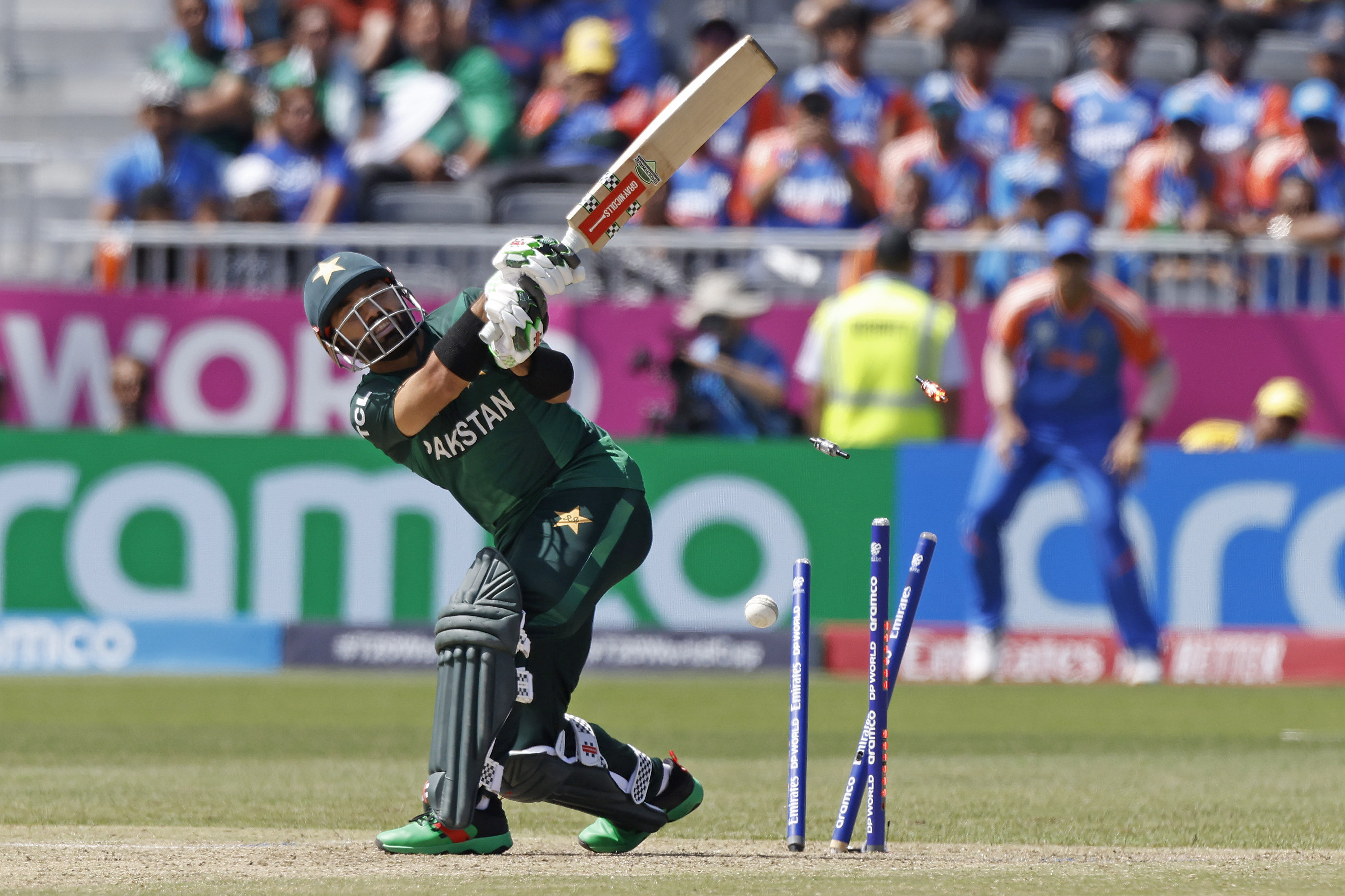Cricket
How to play cricket: T20 World Cup fever taking over New York | amNewYork

Scotland’s Brandon McMullen plays a shot as Oman wicket keeper Pratik Athavale looks on during an ICC Men’s T20 World Cup cricket match at Sir Vivian Richards Stadium in North Sound, Antigua and Barbuda, Sunday, June 9, 2024. (AP Photo/Ricardo Mazalan)
By now, you have seen the headlines and the hype surrounding a sport many New Yorkers have next to zero knowledge of: Cricket.
New York is hosting group-stage matches of the 2024 T20 Cricket World Cup — serving as the backdrop of one of the sport’s great rivalries on Sunday as India narrowly held off Pakistan in the 34,000-seat temporary arena at Eisenhower Park in East Meadow.
The United States also beat those very same powerhouses in Pakistan on Thursday in Dallas, sending up an unrecognizable flare for the domestic sports scene that wants to relish the national team’s victory but also does not know much about the game.
So, how does one play T20 Cricket? Here is a crash course to keep you in the know as the tournament continues:
How do you play T20 International Cricket?
There are multiple formats of cricket, but T20 (or Twenty20) is a shortened version of the game where each team bats for just one inning and faces a maximum of 20 overs. An over consists of six legal deliveries from the bowler (think of him as the pitcher) to the batter (or batsman) within the rectangular pitch within the oval cricket field.
On either side of the rectangular pitch roughly 65 feet apart are wooden targets known as the wickets, which are three horizontal stumps that support two bails sitting atop it.
There are lines at or near each wicket, one being the bowling crease that is in line with one wicket where the ball is delivered by the bowler (pitcher). Roughly four feet in front of the other wicket is the popping crease where the batter is located
While there is just one bowler who delivers the ball to the batsman, one of his teammates serves as the wicketkeeper by crouching down behind the batter and the wicket the bowler is delivering toward. Nine other outfielder players are positioned beyond the rectangular pitch to play defense.

The batting team will have two players — the batsman and the non-striker — on the field at a time stationed at each wicket. The batsman’s objective is to hit the ball delivered by the bowler, who gets a running start and must release the ball before the line of the bowling crease. More importantly, his job is to prevent the wicket from getting hit by the ball.
If the bowler is able to hit the wicket or if the batter puts a ball in play that is caught by one of the outfield players, that is an out — and two of the most common ways in which an out is recorded. The inning is over when either the bowling team delivers 20 overs or if all of the batsmen (10 or 11) are retired.
If the batsman puts the ball in play and it is not caught, he and his teammate (the non-striker) stationed at the other wicket will run to the opposite side. When they reach the opposite wicket safely, that is one run. They are allowed to advance as many times as possible before the opposing team recovers the ball, meaning multiple runs can be scored.
A batter may record four or six runs with a single swing without having to run if he hits the ball to the boundary that borders the outside of the oval-shaped field. If the ball hits the ground before hitting or passing the boundary, it counts for four runs. If the ball goes beyond the boundary on the fly, six runs are scored.
The team with the most runs after their turn at bat wins the match.
How long does it take?

T20 Cricket matches average two-and-a-half hours with each inning — or a team’s turn at bat — spanning for just over an hour. There is a 10-minute break between each inning.
By comparison, other variations of the game can last between seven and eight hours.
How are the Americans doing?
The Americans are becoming the surprise of the tournament having won each of their first two matches. They rank second out of five teams in Group A and only trail the leaders, India, on Net Run Rate, which is a convoluted metric that measures runs scored by the team in the match divided by the number of overs faced by the team in the match minus runs scored by the opposition in the match divided by number of overs faced by the opposition team in the match.
The top two teams in each of the four groups advance to the next round of the tournament.
How many more matches are in New York?
Following South Africa’s tilt against Bangladesh on Monday morning, the Nassau County International Cricket Stadium will host just two more matches at the T20 Cricket World Cup:
- Tuesday, June 11: Pakistan vs. Canada, 10:30 a.m. ET
- Wednesday, June 12: United States vs. India, 10:30 a.m. ET
After the group stage, the tournament will shift entirely to the West Indies.










